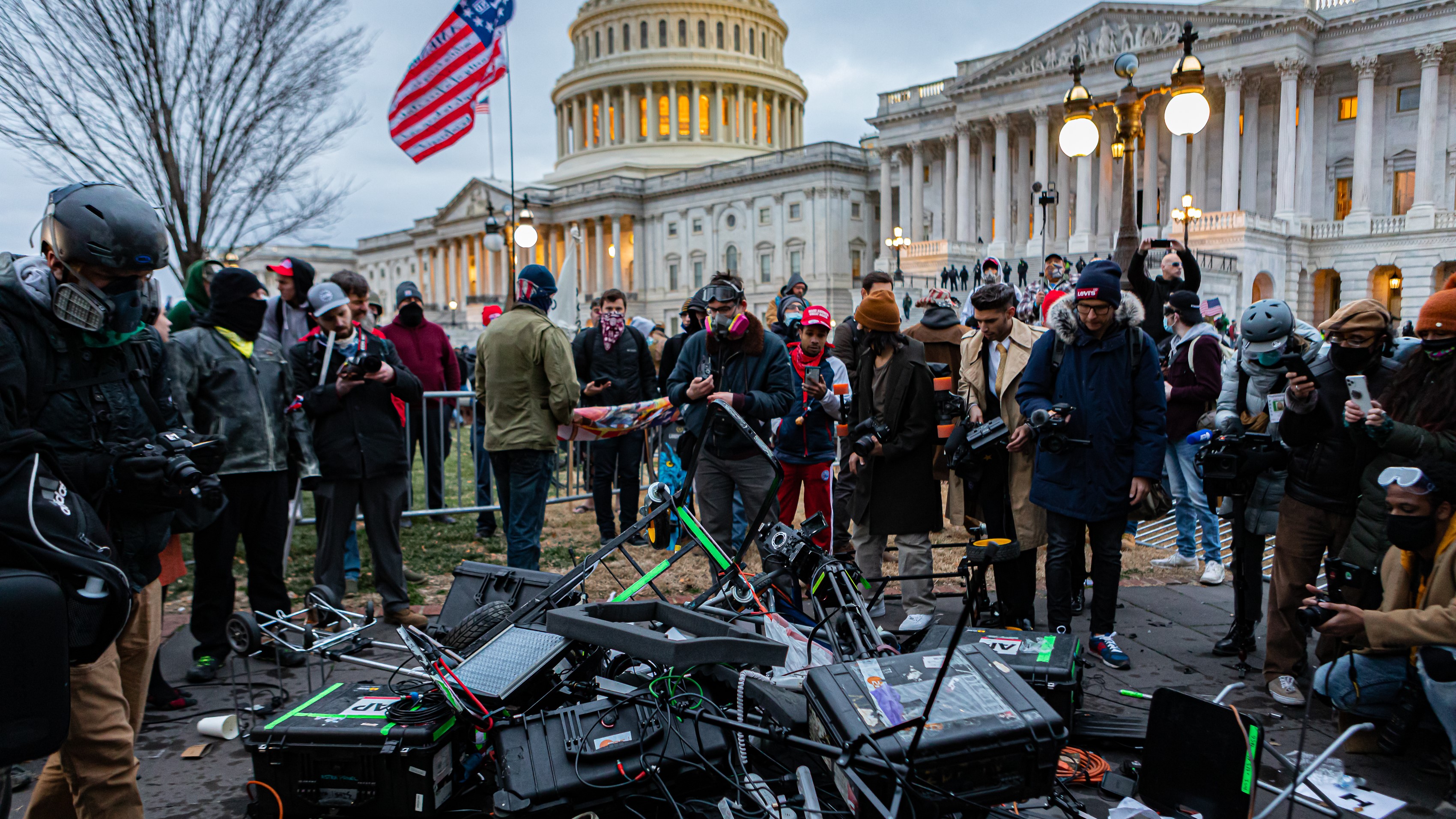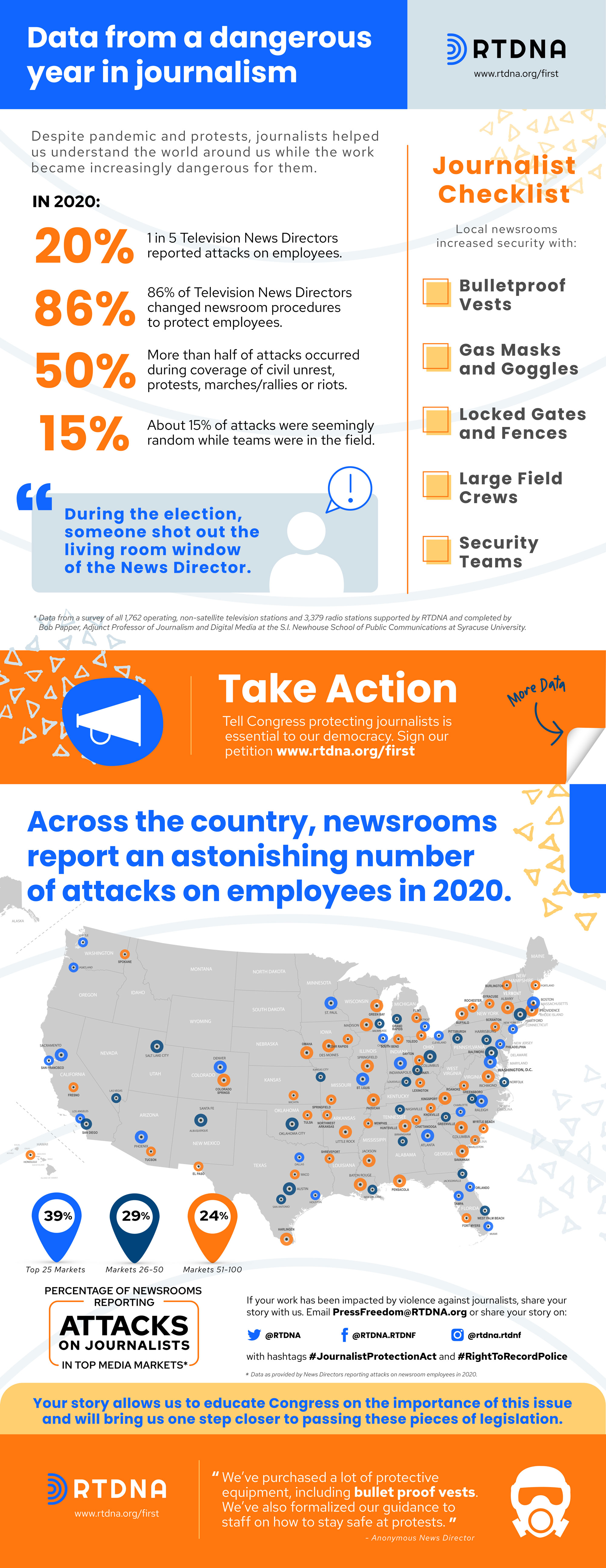One in Five TV Stations Say Journalists Were Attacked in 2020
RTDNA added a new question to its annual survey because of rising safety concerns

WASHINGTON—Between the election and its aftermath and the protests that took place throughout 2020, the safety of journalists has become an increasingly important issue to the point that the Radio Television Digital News Association (RTDNA) added specific questions on safety for the first time in new research.
The 2021 RTDNA/Newhouse School at Syracuse University Survey is an annual report conducted among thousands of TV and radio stations across the country. When asked whether there had been any attacks on their newsroom employees in 2020, one in five (20.5%) TV news directors said there had been.
Attacks against journalists were more common in bigger TV markets. In the top 25 markets, 39% said that a newsroom employee was attacked. That number was 29.4% for markets 26-50 and 24.4% for markets 51-100; after that incidents dipped below 10%.
RTDNA found that attacks were more common in the West, as well as among large newsrooms—38.3% of newsrooms with 51 or more staffers said a journalist experienced an attack. Network affiliation made no difference, according to RTDNA.
Almost half of all attacks were against crews covering what news directors described as “riots, protests and civil unrest.”
The survey was conducted in the fourth quarter of 2020, meaning that the Jan. 6 riots at the Capitol, where a number of attacks against the media were documented, are not included in this report.
Some of the responses included details on how crew were surrounded and threatened during civil unrest last May; crew being hit with pepper spray; verbal harassment; vehicles damaged; journalists attacked on-air; reporters being shoved by police ; and more.
Get the TV Tech Newsletter
The professional video industry's #1 source for news, trends and product and tech information. Sign up below.
A majority of stations (86%) have said they have altered procedures to try and better protect journalists. Such measures include adding professional security for high-risk situations; limiting live shots; requiring more people in the field; giving instructions to bail if threatened; not wearing identifying logos; safety briefings; mandatory 10-minute check-ins; as well as other measures.
NAB President and CEO Gordon Smith, who has been a proponent of greater protection for journalists, gave this statement in response to the RTDNA survey:
“Broadcast journalists play an essential role in documenting pivotal moments in American history from the front lines. That has never been more important than during the past year. NAB is gravely troubled by this study reporting the unprecedented level of harassment, intimidation and violence directed at journalists covering the historical events of 2020. These unacceptable attacks on our nation’s free press undermine our very democracy by preventing journalists’ ability to report the facts and keep the public informed. We are grateful to the dedicated broadcast journalists bringing the truth to Americans during these dangerous times.”
For more information on the survey, visit RTDNA’s website.

